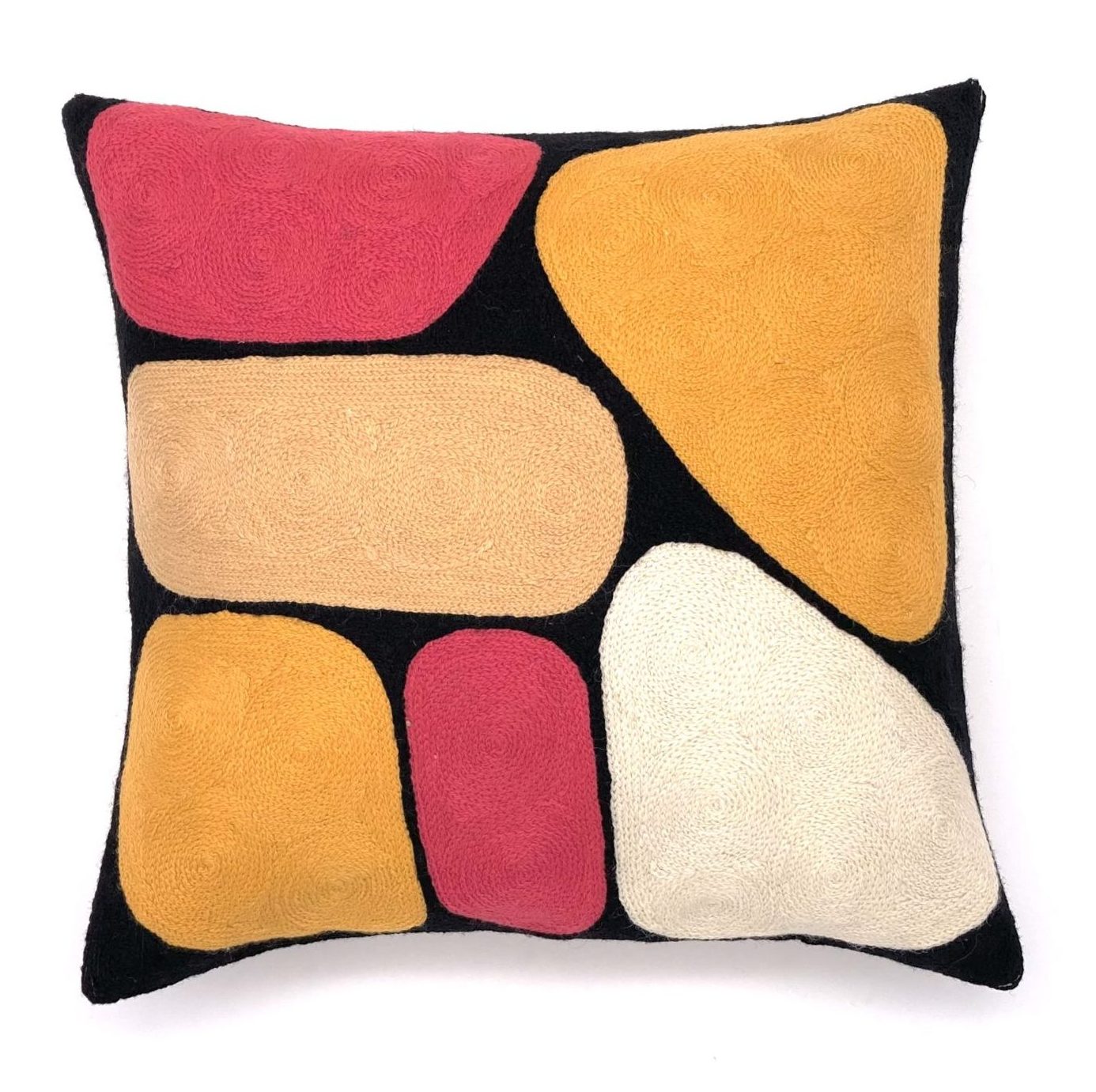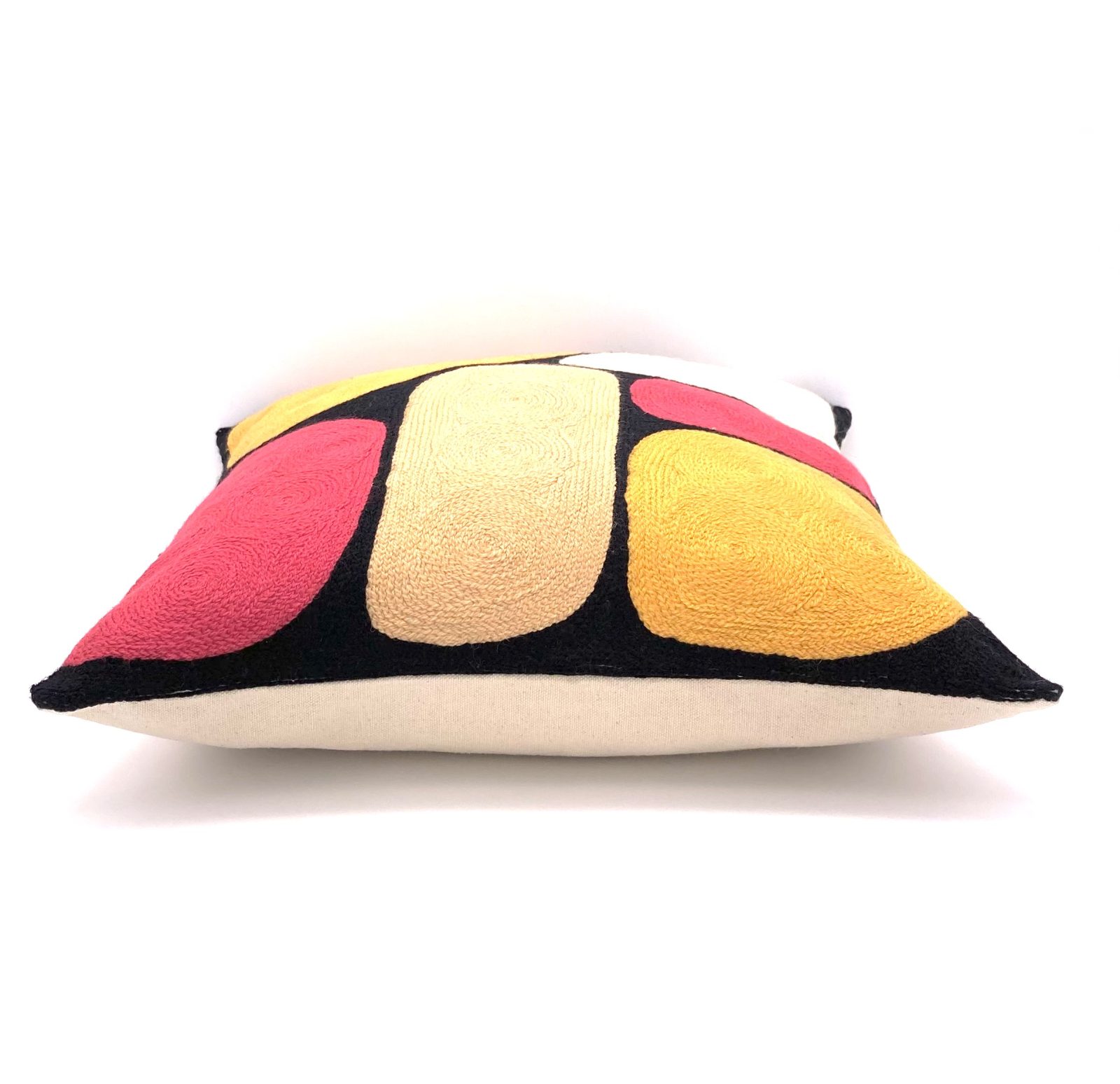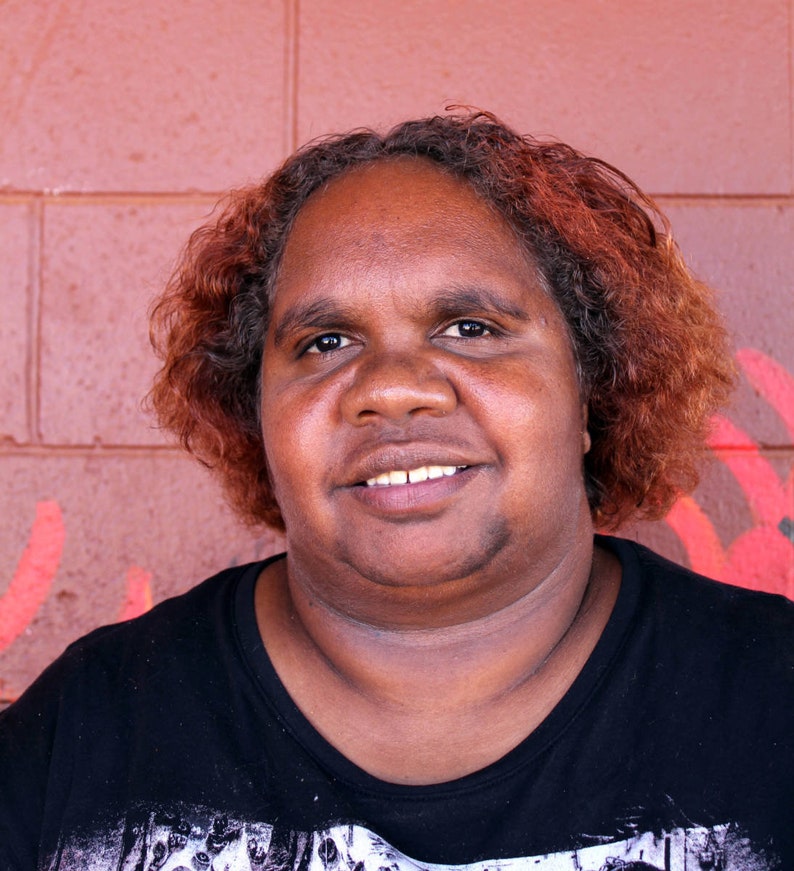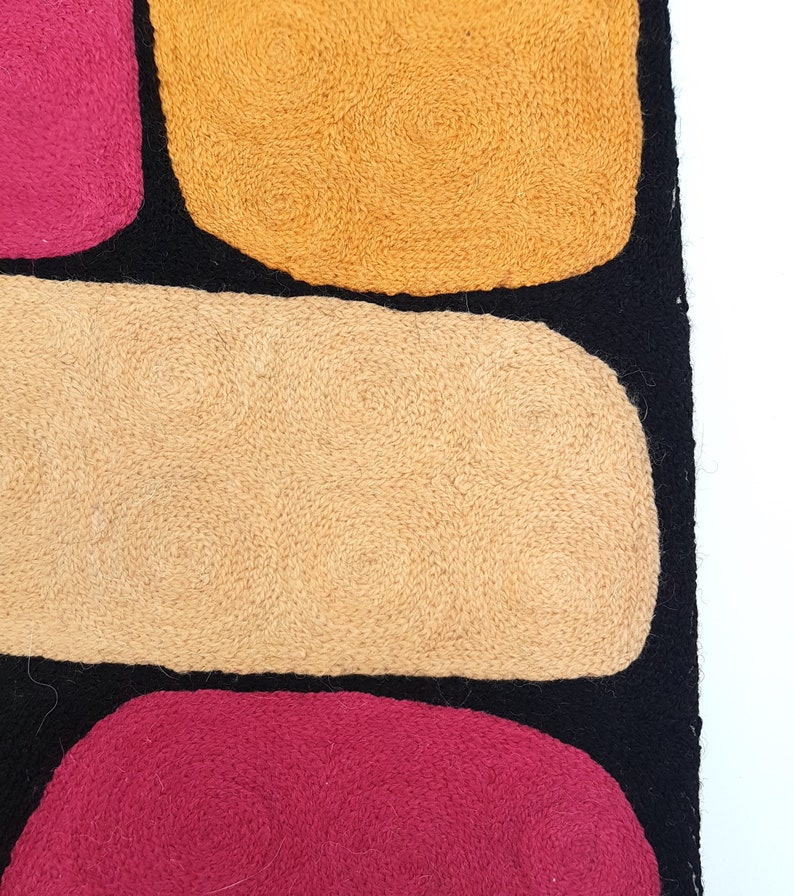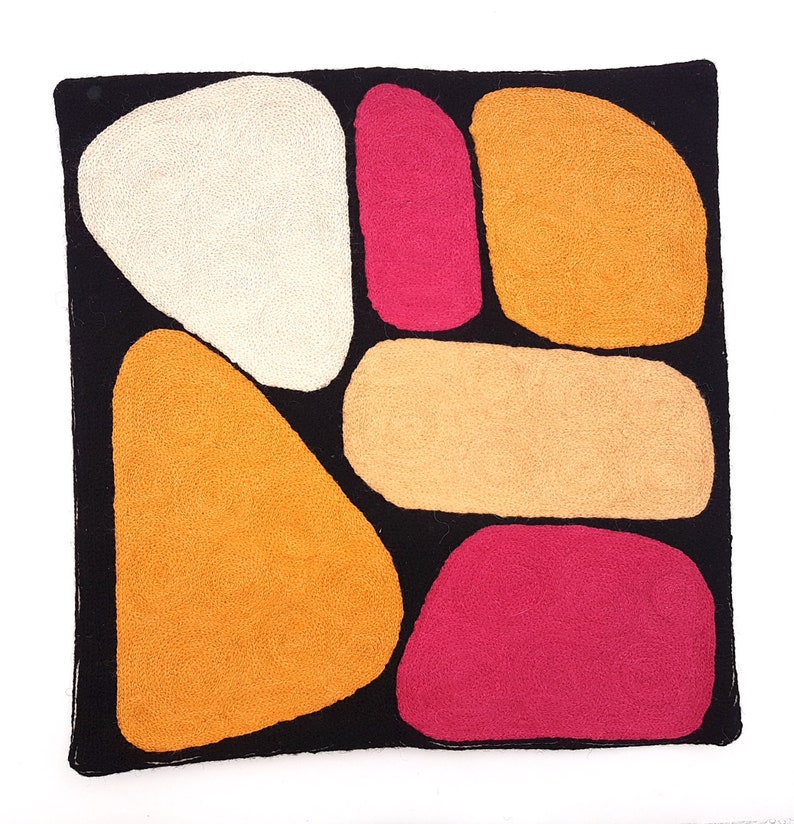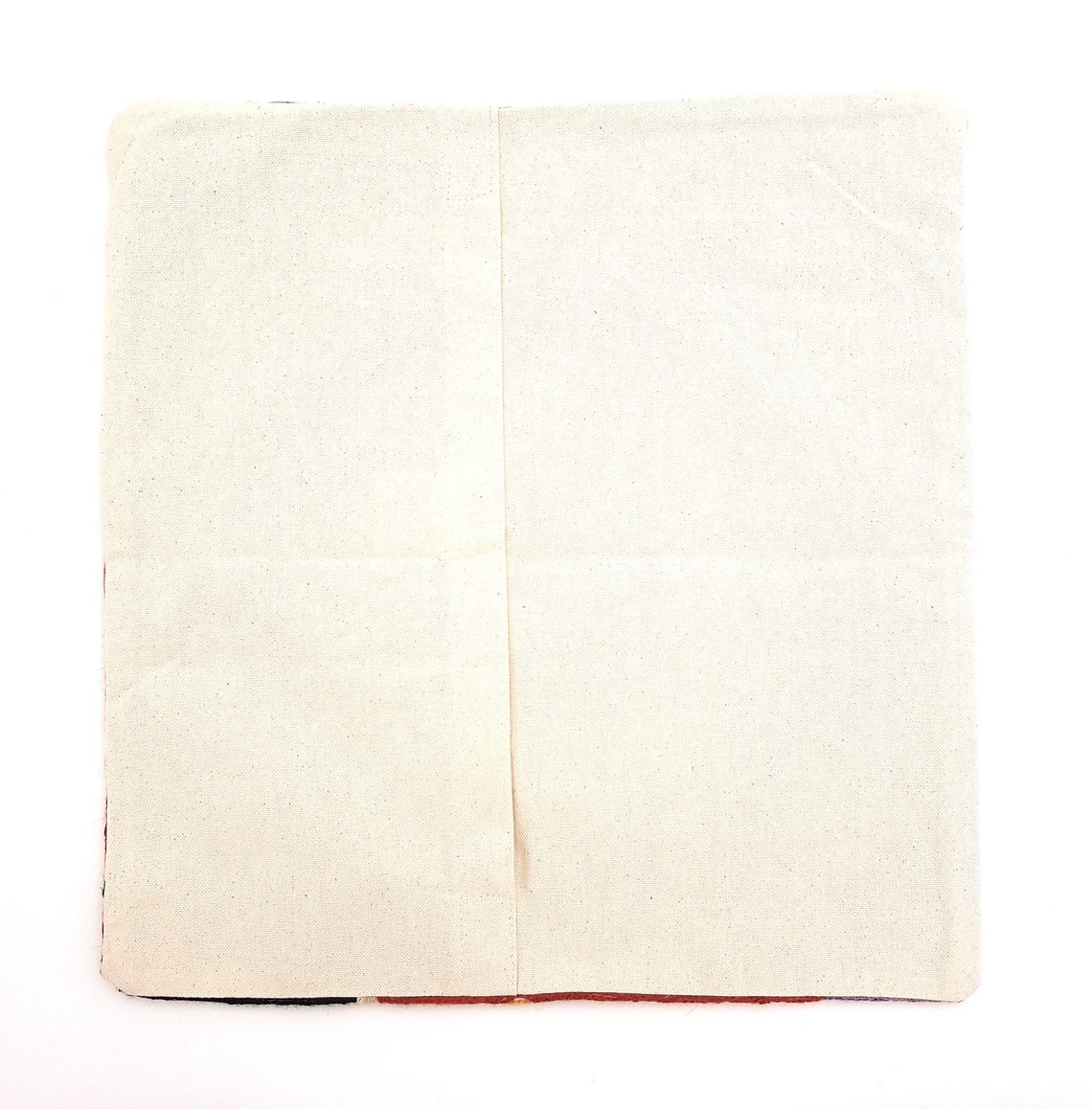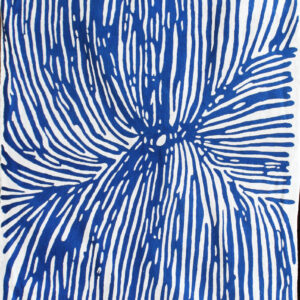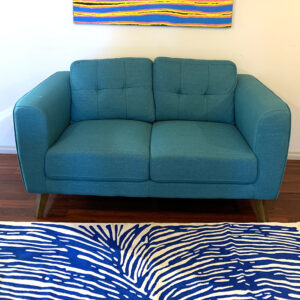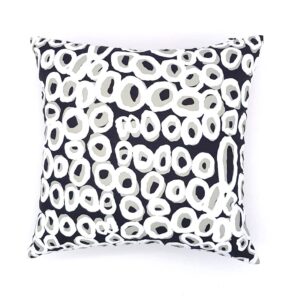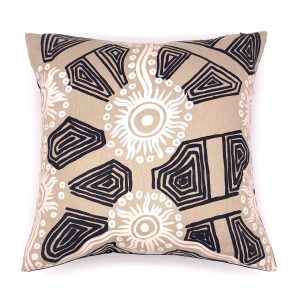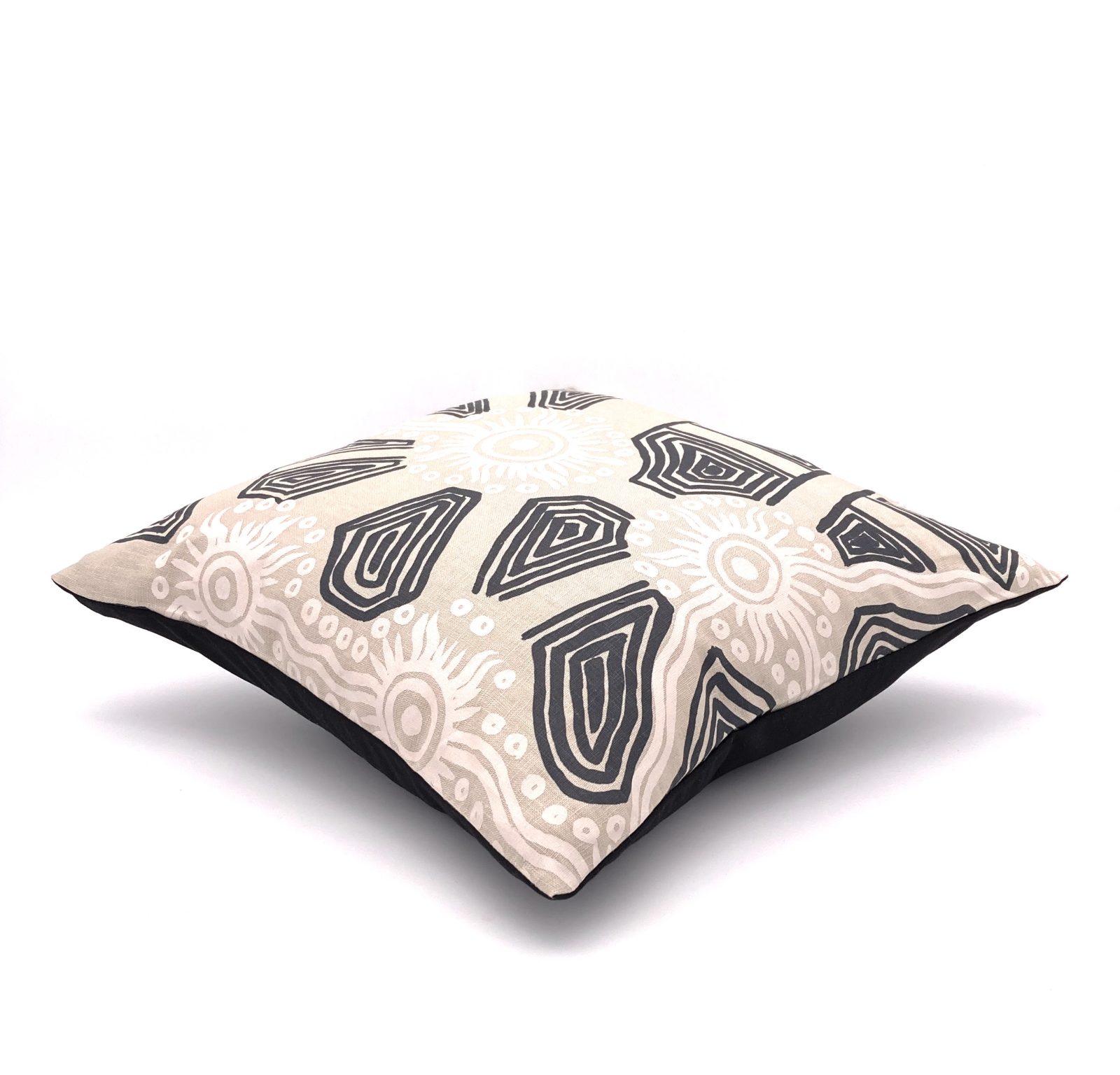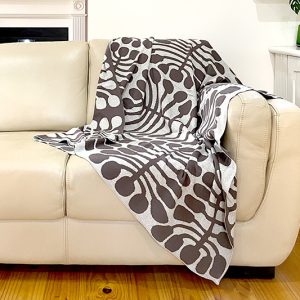Description
Size: 40 cm x 40 cm (16 x 16 inches)
Fabric: wool (front) and cotton (back)
Artist: Keturah Nangala Zimran.
About the artist:
Keturah is an established Luritja and Pintupi artist, who comes from a long line of acclaimed artists. In her artworks Keturah depicts the puli puli (rocks) at two different sites. She paints the landscapes at Haasts Bluff where she grew up and also at Karrkurrutintja (Lake McDonald in Pintupi), located west of Kintore along the WA/NT border. Karrkurrutintja country is an important site of the Pilkati (snake) Tjukurrpa (creation story) of Kaniya Kutjarra (two carpet snakes, two brothers, two Tjangalas). She is a member of Ikuntji Artists.
This story was passed down to her from her grandmother, Narputta Nangala Jugadai, who was born there. Narputta was passed down this story from her father, Talaku Tjampitjinpa. Both Keturah’s grandmother and mother, Molly Jugadai, painted this same country. Keturah has been inspired by the painting legacy and tutorage from her grandmother and mother, though has developed a distinctive style over her practice.
Keturah uses different colours and hues to depict the ways the puli puli change colours with the weather, especially at sunrise and sunset. “The sand hills I paint are my mother’s story and the rocks I paint are my own story. My paintings are about my story and my mother’s…I like to paint; painting helps me forget my troubles. I paint every day. My Grandmother used to say to me when I was younger: “One day you will paint.”.
About the BWA chainstitch (gabba) kilim products
These beautiful, unique textiles are a cross-cultural collaboration combining Aboriginal designs and traditional Kashmiri rug-making techniques. Chain stitched, using hand dyed wool, each is a completely handmade piece. A more empowering way to work, this brings many direct benefits to the artists’ and their community. Control and ownership of intellectual property are also maintained. Purchase of these products guarantees a direct return to the Aboriginal artist and their community.
CARE INSTRUCTIONS: These cushion covers feel great and are fabulously hardwearing – we can vouch for that.
Do not put place/use in direct sunlight or colors may fade. To clean – dry cleaning recommended. It is possible with careful hand-wash in warm water using a wool detergent. Creases can be ironed out on a wool (low) steam setting.

